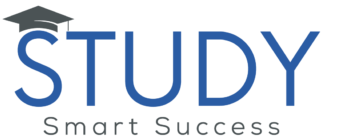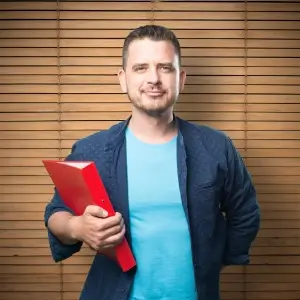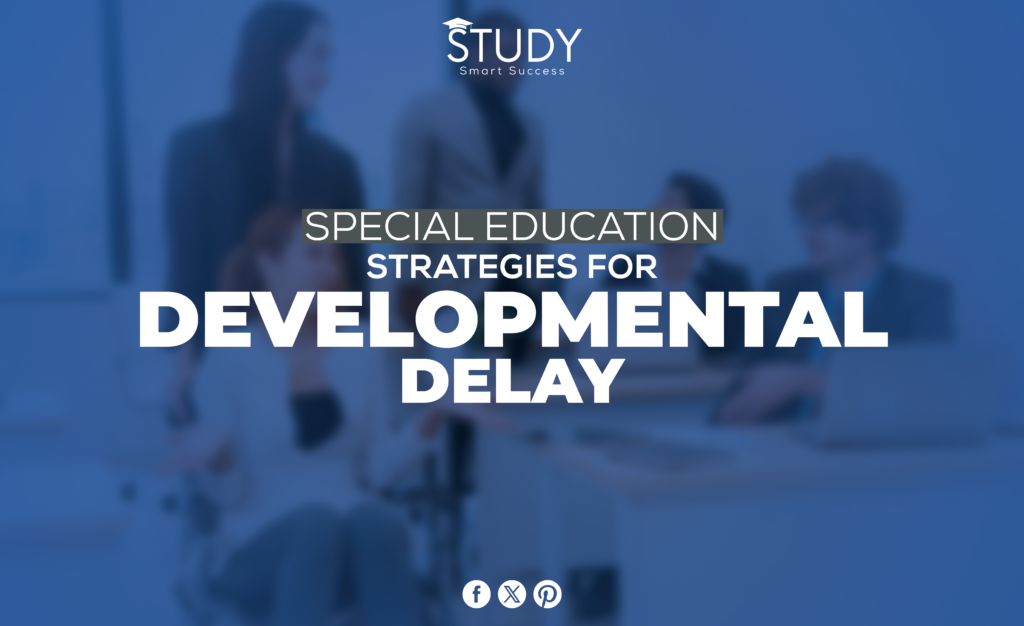Parenting a child with a developmental delay is exciting and challenging. It’s crucial to remember that every child has talents and abilities, regardless of growth rate. Parents, special education teachers, and pediatricians have an excellent opportunity to create a loving, supportive environment for these kids to succeed.
This comprehensive guide examines special education strategies for developmental delays. Whether you’re a skilled teacher, therapist, or parent, these approaches will help you support the special child.
Understanding Developmental Delay
Before we get into the tactics, it’s important to understand what developmental delay means. Kids with developmental delays have to work harder to learn simple skills. This might impact the physical, mental, social, or emotional areas.
Slow growth in language, physical, and social skills development can be early signs of a developmental delay. It might become clear that the child isn’t coming up with the right ideas for their age. Genetic factors, problems during pregnancy or birth, and brain diseases are just some of the things that can cause it.
Cultivating an Enriched Environment
Children with developmental delays need a safe and stimulating environment to grow and learn. Creating this kind of setting requires a few important things:
Sensory Integration and Environment Design
An important venue for developmental delay kids to use their senses in combination. Consider changing a child’s physical information to assist them grow. Add soothing lighting, minimize the noise, and give kids sensory-motor experiences to boost learning.
Structured Learning with Individual Focus
Each youngster requires a customized learning strategy. Individual goals matter more in structured learning. An IEP with teachers and tutors ensures a child’s education is based on their strengths and shortcomings.
Mathematica’s Suggestion
Some ways to deal with sound sensitivity are to make quiet areas with materials that absorb sound or use headphones that block noise. Similarly, a child with physical sensitivity could be helped by starting with easy textures and adding more materials over time.
Empowering with Assistive Technology
Developmentally delayed children can learn and converse more easily with modern technologies. Speech recognition software, adaptive computers, and other aids can assist struggling students in communicating and participating. With these tools, kids may express themselves, participate in class, and learn at their own pace. Learning becomes more accessible and more fun.
Inclusive Education Practices
Children with developmental delays should spend as much time as possible in conventional schools for social and emotional development. Inclusive education helps children with delays and teaches their peers empathy, acceptance, and openness to diversity. Changes in course delivery make the classroom safe for all students. Kids with problems following oral directions can use visual aids.
These strategies in education and care can help children with developmental disabilities realize their full potential. By meeting their needs and making the school a pleasant, helpful place, we can help these youngsters succeed in life.
Building Blocks for Learning
Play-based Learning
Children with developmental delays learn best through play, the language of childhood. Structured play can help kids learn many things, from how to wait their turn in social situations to better-understanding ideas in school through fun, involved games.
Communication Enhancement
Making it easier for people to talk to each other helps kids who are behind in their language development. Children with language and communication problems can communicate and understand others better using visual aids like pictures, movements, or sign language.
Executive Functions and Self-Regulation
Executive functions like planning, organizing, and managing emotions may be difficult for kids with developmental delays. It is very important for their general growth that they learn these skills and practice them in a safe place.
Adaptive Physical Education
Developmentally delayed children need mental, social, and physical growth. Adaptive Physical Education (APE) meets each child’s needs. Through fun, beneficial physical activities, APE helps kids improve balance, coordination, and significant and small motor skills. Each child’s physical education program should be customized to help them exercise safely and establish a healthy lifestyle.
Nutritional Considerations
A healthy diet helps children with developmental disabilities thrive mentally and physically. Some growth-affecting illnesses can be managed with dietary therapy. Working with dietitians or nutritionists to create a customized meal plan for each child can help them succeed in and out of school.
Tools and Techniques for Special Education
Assistive Technology
Children with developmental difficulties might learn differently with the help of technology. Speech-to-text software and adapted computers can help youngsters with communication and movement issues understand the curriculum.
Positive Behavioral Support
Positive behavioural support to deal with difficult behaviours can help appropriately direct these actions. To do this, you must figure out what sets off the behaviour, teach new behaviours, and make a setting that supports success.
Multisensory Instruction
By using more than one feeling in the learning process, ideas can be reinforced and remembered better. For instance, giving kids number problems to solve with toys can help them understand abstract ideas like adding and taking away.
Social Skills Development
Social skills are essential for kids with developmental disabilities to form relationships and get along with others. Role-playing, social tales, and group work let kids connect, share, and understand others. This training boosts self-esteem, relationships, and freedom.
Early Intervention Programs
Developmentally delayed children need immediate treatment to fulfill their potential. These programs provide targeted support and tools before a kid starts school. By treating growth difficulties early, kids can improve their skills and catch up to their peers. Speech and physical therapy and parent support are examples of early intervention. Each program is tailored to each child.
Parent and Caregiver Training
Giving parents and caregivers the tools to help their kids learn is vital. They can acquire treatment tactics and learning exercises at home through seminars and training to help them remember formal lessons. Parents and caregivers can cope with developmental delays and build a supportive and understanding family with emotional support.
Community Integration Activities
Involving developmental delays in neighborhood events makes everyone feel accepted. Participating in community events, public programs, and family-friendly activities can boost kids’ social skills and self-confidence. This helps the kids and enhances the community by promoting diversity and understanding.
Collaborative Approach to Special Education
The Role of Parents and Caregivers
The best people to help a child learn are their parents and other adults who care for them. Parents can help their children get the help they need to reach their full potential by staying informed, being involved in their child’s school and therapy, and speaking up for their children.
The Educator’s Perspective
Teachers are very important in special education, and their knowledge is useful. Therapists, support staff, and families can help teachers develop plans to help students in and out of the classroom.
Team-Based Child Development
Using a team-based method to help kids grow and learn ensures that all of their life is considered. All the people involved in this plan from different fields talk to each other and work together daily so the child has a strong support system.
Adaptive Sports Programs
Sports aid youngsters with developmental difficulties physically and socially. Adaptive sports programs are for special needs youth. These programs allow kids to play skill-adapted team and individual sports. Disabled basketball and modified swimming lessons make people feel like they belong, are accomplished, and work together. They encourage healthy competition and fitness.
Digital Literacy and Accessibility
Children with developmental impairments must master technology in this digital age. Digital information should be available to all pupils with vision, hearing, or thinking issues. Technology should enable this in schools and training programs. Screen readers, speech recognition software, and accessible educational apps can assist teachers in preparing these youngsters for school and careers.
Inclusive Education Practices
Encourage acceptance to make kids with developmental disabilities feel valued and supported in the classroom. Peer training, specialized learning, and group work help all kids develop. These methods give children with developmental disabilities a rich and varied learning experience. These behaviors also teach all pupils to tolerate and recognize differences.
Addressing Emotional and Social Growth
Emotional Well-being
For kids with developmental delays, taking care of their emotional health is as important as meeting their school goals. Teaching them how to understand and deal with their emotions can help them handle the ups and downs of life better.
Social Skills Development
For many kids with developmental delays, making friends is hard. Kids can practice and improve at making friends through social skills groups and planned exchanges with other kids.
Technology in Special Education
Since technology entered special education, teachers have transformed how they help pupils with developmental impairments. Interactive software, instructional apps, and other aid gadgets enable students to connect with the material and tailor their learning. Nonverbal pupils can use technology to express themselves and interact in class.
Professional Development for Educators
Teachers must learn new ways to help children with developmental impairments. Professional growth. Workshops, seminars, and specialized training can assist instructors in understanding developmental issues, using classroom technology, and promoting inclusive teaching. Consider how special education is evolving to accommodate all students’ needs.
Transition Planning for Adulthood
Special education helps children with developmental delays transition from childhood to adulthood. Plan for the transition early by learning life skills, getting career training, and evaluating post-high school options. This process involves students, their families, instructors, and community support providers setting achievable goals and planning for adult independence and achievement.
Culturally Responsive Teaching
Culturally sensitive teaching involves respecting and appreciating the backgrounds of pupils with developmental delays. This ensures that lessons reflect all students’ identities. This strategy creates a welcoming classroom for children from diverse cultural backgrounds.
Family Engagement and Support Groups
Whole-family support groups and activities can benefit families with developmental delays. Kids learn at home when their families plan and execute school events, and support groups let them share their experiences, acquire skills, and get mental support. These networks can profoundly impact the health and progress of children with developmental disabilities.
Celebrating Every Milestone
Setting Realistic Expectations
Kids with developmental delays must set and celebrate achievable goals to stay motivated and feel good about their self-esteem. Recognizing and enjoying progress, no matter how small, is important because it leads to bigger goals.
Proactive Planning for Different Stages
People with developmental issues need to keep learning and getting help. The child’s educational team can ensure their needs are always met by planning for changes, like when the child moves from early intervention to preschool or high school to college.
Incorporating Therapeutic Interventions
School-plan treatments can make learning more pleasurable for kids with developmental difficulties. Occupational, speech and physical therapy can improve your thinking, talking, and movement. This blended technique aligns therapeutic and educational goals, providing a more holistic support system.
Enhancing Peer Interaction and Inclusion
For kids with developmental impairments to feel included, their peers must accept and understand them. Get to know your classmates and establish constructive relationships via role-playing, group projects, and joint learning. This reduces bullying and loneliness. Teachers should support open-to-all leisure activities so kids of all abilities can join sports teams, art organizations, and social parties.
Utilizing Individualized Education Programs (IEP)
IEPs help students with developmental challenges succeed in school and grow as people. By creating clear, realistic, relevant, and time-bound SMART goals, IEPs give each child a customized path. Review these plans often to keep teaching approaches relevant and adjust to the child’s requirements.
Advocating for Policy and Systemic Change
Local, state and national policy changes can increase developmental delay education and support. This could involve pushing for more special education funding, more accessible access to helpful technology, and stricter enforcement of laws that protect disabled students’ rights and best interests. Teacher, parent, and worker advocates may make schools more inclusive by speaking out.
Continuous Feedback and Assessment
Kids need constant feedback and testing to assess their growth and developmental delay. Social, mental, and physical growth should accompany academic accomplishment. Regular assessments help teachers identify issues, adjust their teaching, and motivate pupils. Students engaging in their evaluation can become more self-aware and reflective, empowering them to learn actively.
Conclusion
Special education for kids with developmental delays is about helping them grow and reach their full potential. Using the techniques in this guide, you can make a helpful learning setting that sees and builds on each student’s unique skills. Remember that the main goal is to teach them to be independent and to love learning for a lifetime. Every small step forward is a win; every child can reach their full potential with the right help and tactics.


